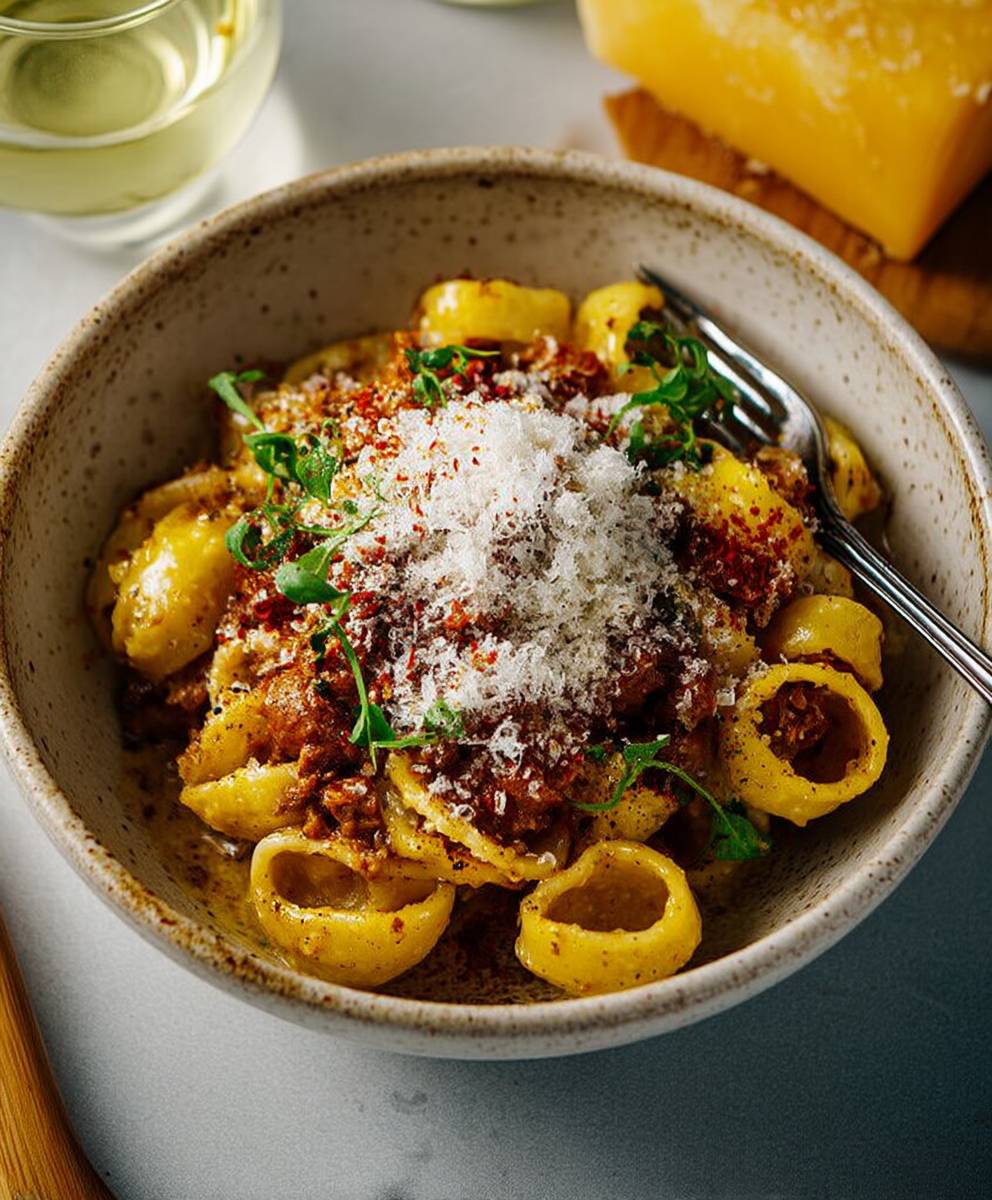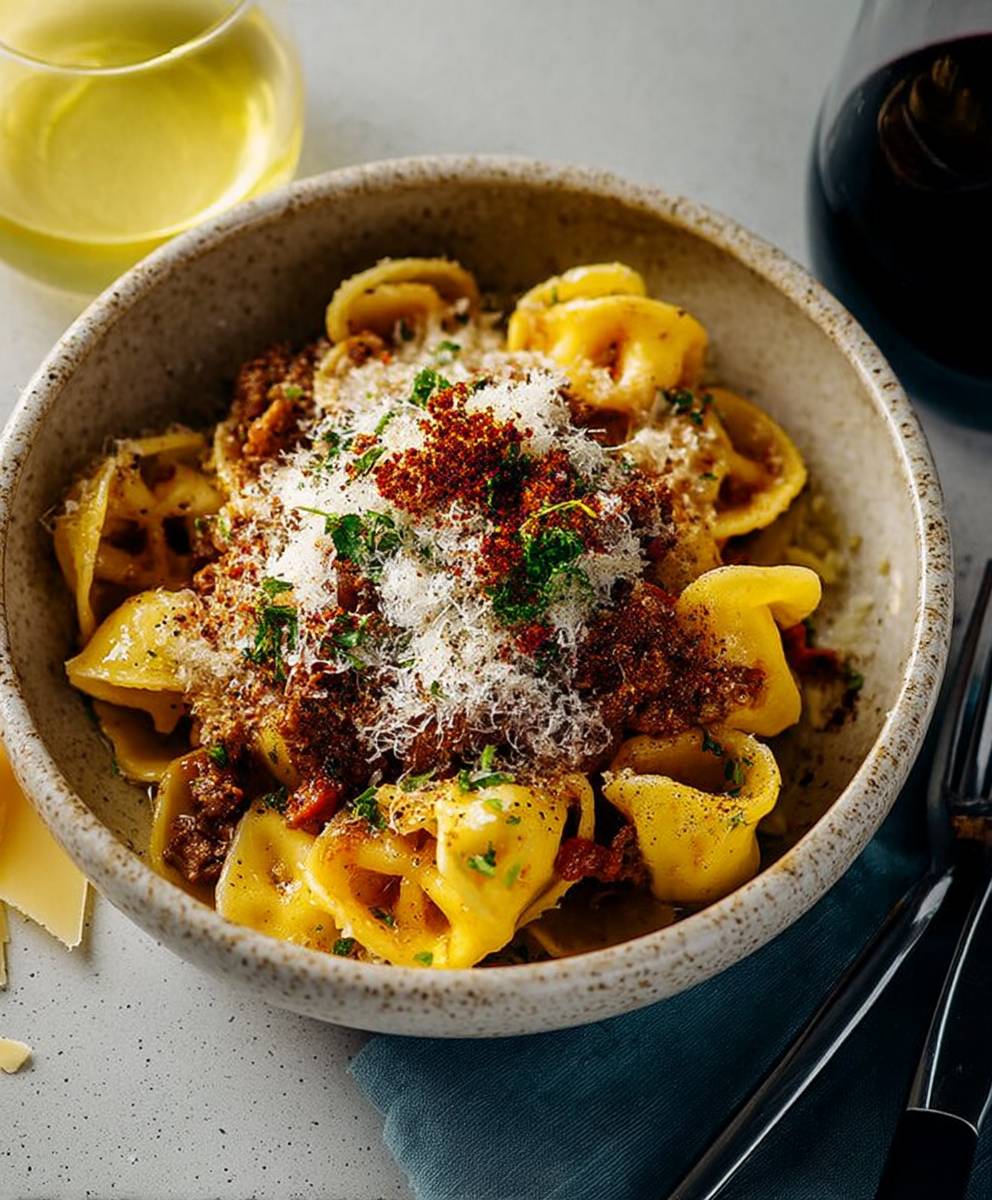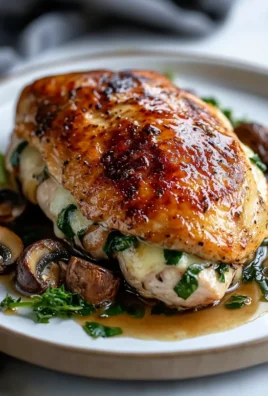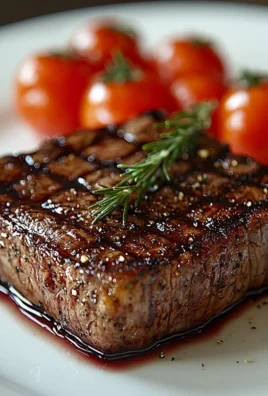Pot ragu modenese, a culinary hug in a pot, is about to become your new favorite comfort food. Imagine tender, slow-cooked meat melting in your mouth, coated in a rich, deeply flavorful tomato sauce that clings perfectly to every strand of pasta. Forget everything you thought you knew about ordinary ragu; this is a different beast entirely!
Originating from the Emilia-Romagna region of Italy, specifically Modena, pot ragu modenese boasts a history as rich and complex as its flavor profile. Unlike its Bolognese cousin, which often incorporates milk and a shorter cooking time, this regional variation relies on a patient, low-and-slow braising method, allowing the flavors to meld and deepen over several hours. Traditionally, it was a dish reserved for special occasions, a testament to the time and care poured into its creation.
What makes this ragu so irresistible? It’s the combination of simple, high-quality ingredients and the magic of time. The slow cooking process transforms tougher cuts of meat into incredibly tender morsels, while the tomato sauce develops a depth of flavor that is simply unmatched. People adore it for its comforting warmth, its satisfying texture, and its ability to transport them to the heart of Italy with every single bite. Plus, it’s incredibly versatile! Serve it over fresh tagliatelle, polenta, or even use it as a filling for lasagna. Get ready to experience the ultimate in Italian comfort food!
Ingredients:
- For the Ragu:
- 1 kg (2.2 lbs) beef chuck, cut into 1-inch cubes
- 500g (1.1 lbs) pork belly, skin removed, cut into 1-inch cubes
- 250g (0.55 lbs) pancetta, diced
- 2 large onions, finely chopped
- 2 carrots, finely chopped
- 2 celery stalks, finely chopped
- 2 cloves garlic, minced
- 2 tablespoons tomato paste
- 1 (750ml) bottle dry red wine (Sangiovese or Chianti Classico recommended)
- 500ml (2 cups) beef broth
- 250ml (1 cup) whole milk
- 2 bay leaves
- 1 teaspoon dried thyme
- 1/2 teaspoon grated nutmeg
- Salt and freshly ground black pepper to taste
- Olive oil
- For Serving:
- 500g (1.1 lbs) fresh tagliatelle pasta
- Freshly grated Parmigiano-Reggiano cheese
Preparing the Meat:
- Sear the Beef: Generously season the beef chuck cubes with salt and pepper. Heat a large, heavy-bottomed pot or Dutch oven over medium-high heat. Add a few tablespoons of olive oil. Working in batches to avoid overcrowding the pot, sear the beef cubes on all sides until deeply browned. This step is crucial for developing rich flavor. Remove the seared beef from the pot and set aside.
- Sear the Pork Belly: Season the pork belly cubes with salt and pepper. Add them to the same pot and sear on all sides until golden brown and crispy. Remove the pork belly from the pot and set aside with the beef.
- Render the Pancetta: Add the diced pancetta to the pot and cook over medium heat until it renders its fat and becomes crispy. Remove the pancetta from the pot with a slotted spoon, leaving the rendered fat in the pot. Set the pancetta aside.
Building the Ragu Base:
- Sauté the Vegetables: Add the chopped onions, carrots, and celery to the pot with the rendered pancetta fat. Cook over medium heat, stirring occasionally, until the vegetables are softened and lightly caramelized, about 10-15 minutes. This process, known as a soffritto, is essential for building the flavor base of the ragu. Don’t rush this step!
- Add the Garlic: Add the minced garlic to the pot and cook for another minute until fragrant, being careful not to burn it.
- Incorporate the Tomato Paste: Stir in the tomato paste and cook for 2-3 minutes, stirring constantly, until it darkens slightly. This helps to deepen the tomato flavor.
Combining and Simmering the Ragu:
- Deglaze with Red Wine: Pour in the red wine and bring to a simmer, scraping up any browned bits from the bottom of the pot. Allow the wine to reduce by about half, which will concentrate its flavor and remove some of the alcohol.
- Return the Meat: Return the seared beef and pork belly to the pot. Add the reserved crispy pancetta.
- Add Broth and Seasonings: Pour in the beef broth and add the bay leaves, dried thyme, and grated nutmeg. Season with salt and pepper to taste.
- Bring to a Simmer and Reduce Heat: Bring the mixture to a simmer, then reduce the heat to low, cover the pot, and simmer gently for at least 3-4 hours, or even longer if you have the time. The longer it simmers, the more tender the meat will become and the more the flavors will meld together. Stir occasionally to prevent sticking.
- Add Milk: After 3-4 hours of simmering, stir in the whole milk. This adds richness and helps to tenderize the meat further. Continue to simmer, uncovered, for another hour, or until the ragu has thickened to your desired consistency. The ragu should be thick and luscious, with the meat falling apart easily.
- Adjust Seasoning: Taste the ragu and adjust the seasoning with salt and pepper as needed. Remove the bay leaves before serving.
Cooking the Pasta and Assembling:
- Cook the Pasta: While the ragu is simmering for the final hour, cook the tagliatelle pasta according to package directions in a large pot of salted boiling water until al dente. Reserve about 1 cup of the pasta water before draining.
- Combine Pasta and Ragu: Drain the pasta and add it directly to the pot with the ragu. Toss to coat the pasta evenly with the sauce. If the sauce is too thick, add a little of the reserved pasta water to loosen it up.
- Serve: Serve the tagliatelle with ragu immediately, garnished with freshly grated Parmigiano-Reggiano cheese. A drizzle of good quality olive oil is also a nice touch.
Tips for the Best Ragu:
- Use High-Quality Ingredients: The quality of your ingredients will directly impact the flavor of the ragu. Use good quality beef, pork, and pancetta. Fresh, high-quality vegetables are also important.
- Don’t Rush the Searing: Searing the meat properly is crucial for developing a deep, rich flavor. Make sure the pot is hot and don’t overcrowd it.
- Low and Slow is Key: The longer the ragu simmers, the better it will taste. Be patient and allow the flavors to meld together.
- Adjust the Consistency: If the ragu is too thick, add a little beef broth or pasta water to thin it out. If it’s too thin, simmer it uncovered for a longer period of time to allow it to reduce.
- Make it Ahead: Ragu actually tastes even better the next day, as the flavors have more time to develop. You can make it a day or two in advance and store it in the refrigerator. Reheat gently before serving.
- Variations: Feel free to experiment with different types of meat, such as veal or lamb. You can also add other vegetables, such as mushrooms or bell peppers. Some people like to add a splash of balsamic vinegar or a pinch of red pepper flakes for extra flavor.
- Wine Pairing: Serve this ragu with a full-bodied red wine, such as Sangiovese or Chianti Classico.
Storing Leftovers:
Leftover ragu can be stored in an airtight container in the refrigerator for up to 3-4 days. It can also be frozen for up to 2-3 months. Thaw completely before reheating. Reheat gently on the stovetop or in the microwave.
Serving Suggestions:
While traditionally served with tagliatelle, this ragu is also delicious with other types of pasta, such as pappardelle, fettuccine, or rigatoni. You can also serve it over polenta or mashed potatoes. It’s also great as a filling for lasagna or baked ziti.
Why This Recipe Works:
This recipe is a classic for a reason. The combination of beef, pork, and pancetta creates a complex and flavorful sauce that is incredibly satisfying. The long simmering time allows the flavors to meld together and the meat to become incredibly tender. The addition of milk adds richness and helps to tenderize the meat even further. The result is a ragu that is rich, flavorful, and utterly delicious.
Troubleshooting:
- Ragu is too watery: Continue to simmer the ragu uncovered until it reaches your desired consistency. You can also add a cornstarch slurry (1 tablespoon cornstarch mixed with 2 tablespoons cold water) to thicken it.
- Ragu is too thick: Add a little beef broth or pasta water to thin it out.
- Ragu is too bland: Add more salt, pepper, or other seasonings to taste. You can also add a splash of balsamic vinegar or a pinch of red pepper flakes for extra flavor.
- Meat is not tender enough: Continue to simmer the ragu for a longer period of time until the meat is tender.
Nutritional Information (Approximate, per serving):
Please note that the nutritional information is an estimate and may vary depending on the specific ingredients used.
- Calories: 800-1000
- Fat: 50-70g
- Protein:

Conclusion:
This Pot Ragu Modenese isn’t just another pasta sauce; it’s a culinary journey to the heart of Italy, simmered to perfection in your very own kitchen. The depth of flavor, achieved through slow cooking and the careful layering of ingredients, is simply unparalleled. From the initial sizzle of the pancetta to the final, rich aroma that fills your home, every step of this recipe is a testament to the art of Italian cooking. It’s a dish that speaks of tradition, family, and the simple pleasure of sharing a delicious meal.
But why is this ragu a must-try? Because it’s more than just a sauce; it’s an experience. The slow cooking process allows the flavors to meld and deepen, creating a complexity that you just can’t achieve with a quick, store-bought sauce. The combination of ground beef, pork, and pancetta provides a rich, meaty base, while the vegetables add sweetness and depth. The touch of milk and white wine contributes to a creamy, luxurious texture that coats every strand of pasta perfectly. It’s a symphony of flavors that will tantalize your taste buds and leave you wanting more.
And the best part? It’s incredibly versatile! While traditionally served with tagliatelle, this Pot Ragu Modenese is equally delicious with pappardelle, fettuccine, or even rigatoni. For a truly authentic experience, try serving it with fresh, homemade pasta. The texture and flavor of fresh pasta perfectly complement the richness of the ragu.
Looking for variations? Consider adding a pinch of red pepper flakes for a touch of heat, or a handful of chopped fresh herbs like parsley or basil for a burst of freshness. For a vegetarian option, you can substitute the meat with mushrooms and lentils, creating a hearty and flavorful ragu that’s just as satisfying. You could also experiment with different types of wine, such as a Chianti or a Sangiovese, to see how it affects the overall flavor profile. A splash of balsamic vinegar at the end can also add a delightful tang.
Serving suggestions abound! Beyond pasta, this ragu is fantastic as a filling for lasagna, a topping for polenta, or even as a base for a hearty shepherd’s pie. Imagine layering it with creamy béchamel sauce and sheets of pasta for a decadent lasagna that will impress your guests. Or spooning it over creamy polenta for a comforting and satisfying meal on a cold winter evening. The possibilities are endless!
Ready to embark on your own culinary adventure?
I truly believe that this recipe is a game-changer. It’s a dish that you’ll be proud to serve to your family and friends, and one that they’ll be begging you to make again and again. So, gather your ingredients, put on some Italian music, and get ready to create a masterpiece.
I’m so excited for you to try this Pot Ragu Modenese! Once you do, please come back and share your experience in the comments below. I’d love to hear about your variations, your serving suggestions, and any tips or tricks you discovered along the way. Let’s create a community of ragu lovers and share our passion for this incredible dish! Buon appetito!
Pot Ragu Modenese: A Modern Twist on a Classic Italian Dish
Rich Italian Ragu with beef chuck, pork belly, and pancetta, simmered in red wine and beef broth. Serve with tagliatelle and Parmigiano-Reggiano.
Ingredients
- 1 kg (2.2 lbs) beef chuck, cut into 1-inch cubes
- 500g (1.1 lbs) pork belly, skin removed, cut into 1-inch cubes
- 250g (0.55 lbs) pancetta, diced
- 2 large onions, finely chopped
- 2 carrots, finely chopped
- 2 celery stalks, finely chopped
- 2 cloves garlic, minced
- 2 tablespoons tomato paste
- 1 (750ml) bottle dry red wine (Sangiovese or Chianti Classico recommended)
- 500ml (2 cups) beef broth
- 250ml (1 cup) whole milk
- 2 bay leaves
- 1 teaspoon dried thyme
- 1/2 teaspoon grated nutmeg
- Salt and freshly ground black pepper to taste
- Olive oil
- 500g (1.1 lbs) fresh tagliatelle pasta
- Freshly grated Parmigiano-Reggiano cheese
Instructions
- Sear the Beef: Generously season the beef chuck cubes with salt and pepper. Heat a large, heavy-bottomed pot or Dutch oven over medium-high heat. Add a few tablespoons of olive oil. Working in batches to avoid overcrowding the pot, sear the beef cubes on all sides until deeply browned. Remove the seared beef from the pot and set aside.
- Sear the Pork Belly: Season the pork belly cubes with salt and pepper. Add them to the same pot and sear on all sides until golden brown and crispy. Remove the pork belly from the pot and set aside with the beef.
- Render the Pancetta: Add the diced pancetta to the pot and cook over medium heat until it renders its fat and becomes crispy. Remove the pancetta from the pot with a slotted spoon, leaving the rendered fat in the pot. Set the pancetta aside.
- Sauté the Vegetables: Add the chopped onions, carrots, and celery to the pot with the rendered pancetta fat. Cook over medium heat, stirring occasionally, until the vegetables are softened and lightly caramelized, about 10-15 minutes.
- Add the Garlic: Add the minced garlic to the pot and cook for another minute until fragrant, being careful not to burn it.
- Incorporate the Tomato Paste: Stir in the tomato paste and cook for 2-3 minutes, stirring constantly, until it darkens slightly.
- Deglaze with Red Wine: Pour in the red wine and bring to a simmer, scraping up any browned bits from the bottom of the pot. Allow the wine to reduce by about half.
- Return the Meat: Return the seared beef and pork belly to the pot. Add the reserved crispy pancetta.
- Add Broth and Seasonings: Pour in the beef broth and add the bay leaves, dried thyme, and grated nutmeg. Season with salt and pepper to taste.
- Simmer: Bring the mixture to a simmer, then reduce the heat to low, cover the pot, and simmer gently for at least 3-4 hours, or even longer if you have the time. Stir occasionally to prevent sticking.
- Add Milk: After 3-4 hours of simmering, stir in the whole milk. Continue to simmer, uncovered, for another hour, or until the ragu has thickened to your desired consistency.
- Adjust Seasoning: Taste the ragu and adjust the seasoning with salt and pepper as needed. Remove the bay leaves before serving.
- Cook the Pasta: While the ragu is simmering for the final hour, cook the tagliatelle pasta according to package directions in a large pot of salted boiling water until al dente. Reserve about 1 cup of the pasta water before draining.
- Combine Pasta and Ragu: Drain the pasta and add it directly to the pot with the ragu. Toss to coat the pasta evenly with the sauce. If the sauce is too thick, add a little of the reserved pasta water to loosen it up.
- Serve: Serve the tagliatelle with ragu immediately, garnished with freshly grated Parmigiano-Reggiano cheese. A drizzle of good quality olive oil is also a nice touch.
Notes
- Use high-quality ingredients for the best flavor.
- Don’t rush the searing process.
- Low and slow simmering is key to tender meat and rich flavor.
- Adjust the consistency of the ragu with broth or pasta water.
- Ragu tastes even better the next day.
- Feel free to experiment with different meats and vegetables.
- Serve with a full-bodied red wine.
- Leftover ragu can be stored in the refrigerator for 3-4 days or frozen for 2-3 months.
- Serve with other types of pasta, polenta, or mashed potatoes.
- Troubleshooting:
- Too watery: Simmer uncovered.
- Too thick: Add broth or pasta water.
- Too bland: Add more seasoning.
- Meat not tender: Simmer longer.






Leave a Comment